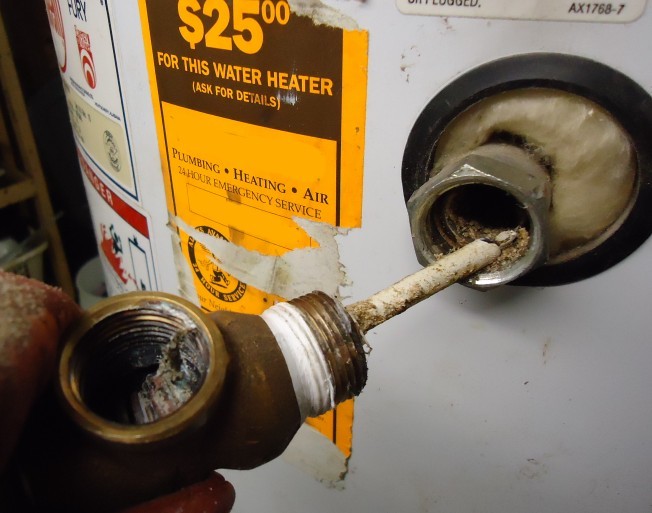Just how do you actually feel in regards to Water Heater Maintenance Tips You Can't Afford to Forget?

Warm water is important for everyday convenience, whether it's for a refreshing shower or cleaning recipes. To ensure your warm water system runs efficiently and lasts much longer, regular maintenance is vital. This article supplies sensible suggestions and understandings on how to preserve your home's warm water system to avoid disturbances and pricey fixings.
Intro
Keeping your home's hot water system might seem complicated, however with a couple of easy actions, you can ensure it operates efficiently for several years ahead. This guide covers whatever from recognizing your hot water system to DIY upkeep pointers and knowing when to contact specialist aid.
Significance of Preserving Your Warm Water System
Routine upkeep not only expands the lifespan of your hot water system yet also guarantees it operates effectively. Disregarding upkeep can result in reduced performance, higher energy costs, and even premature failing of the system.
Indicators Your Hot Water System Requirements Upkeep
Knowing when your warm water system requires attention can stop major problems. Watch out for indications such as irregular water temperature level, weird sounds from the heater, or rusty water.
Purging the Hot Water Heater
Flushing your water heater eliminates sediment accumulation, enhancing effectiveness and prolonging its life.
Checking and Changing Anode Rods
Anode poles stop rust inside the storage tank. Examining and replacing them when worn out is essential.
Facility Problems Needing Expert Assistance
Examples include major leakages, electric troubles, or if your water heater is regularly underperforming.
Routine Professional Maintenance Advantages
Expert upkeep can consist of detailed assessments, tune-ups, and making sure conformity with safety and security criteria.
Evaluating and Changing Temperature Level Setups
Changing the temperature level setups makes sure optimum efficiency and security.
Do It Yourself Tips for Upkeep
You can carry out a number of maintenance tasks yourself to keep your hot water system in leading problem.
Looking for Leakages
Consistently check pipes and connections for leaks, as these can lead to water damages and greater expenses.
Comprehending Your Hot Water System
Before diving right into upkeep jobs, it's practical to comprehend the fundamental components of your hot water system. Typically, this consists of the hot water heater itself, pipelines, anode poles, and temperature level controls.
Regular Monthly Maintenance Tasks
Regular month-to-month checks can aid catch minor issues prior to they escalate.
Examining Pressure Alleviation Valves
Checking the pressure safety valve ensures it operates correctly and protects against extreme pressure accumulation.
Insulating Pipelines
Insulating warm water pipes minimizes heat loss and can save energy.
When to Call a Specialist
While DIY maintenance is valuable, some problems require specialist competence.
Conclusion
Normal maintenance of your home's warm water system is necessary for efficiency, long life, and expense savings. By adhering to these suggestions and knowing when to seek specialist assistance, you can ensure a trusted supply of hot water without unanticipated interruptions.
Water Heater Maintenance Tips
Test the TPR Valve
Shut off the power and the cold-water supply valve. Place a bucket under the pipe connected to the temperature-pressure-release (TPR) valve on the top or side of the tank. (This valve opens if the tank pressure gets too high.) Lift the valve’s tab to let some water out, then let go. If water keeps flowing, drain the tank partway, unscrew the old valve with a pipe wrench, and install a new one. Check the Anode Rod
Put a hose to the tank’s drain cock and let out a few gallons of water. Now fit a 1 1/16-inch socket onto the rod’s hex head on top of the heater (or under its top plate) and unscrew the rod. If it’s less than ½ inch thick or coated with calcium, buy a new one, wrap its threads with Teflon tape, put it back in the tank, and tighten securely. Use this segmented rod if headroom above the tank is limited. Drain the Tank and Wash Out Sediment
Drain the remaining water in the tank into the bucket, then stir up the sediment on the tank’s bottom by briefly opening the cold-water supply valve. Drain and repeat until clean water comes out of the hose. Close the drain cock, refill the tank, and turn its power back on. Adjust the Temperature
Find the temperature dial on the side of the tank and unscrew its cover. Adjust the dial to 120 degrees using a flathead screwdriver. For every 10 degrees the temperature is lowered, you can expect to save up to 5 percent in energy costs. Turn the water heater off or the thermostat down to its lowest setting if you plan to be away from home for more than three days. Insulate the Pipes
Buy some self-sticking 3/8-inch-thick foam pipe insulation that matches the pipes’ diameter. Slide the foam over the hot-and cold-water pipes as far as you can reach. Insulating the cold-water pipe prevents condensation in summer. Peel the tape and squeeze the insulation closed. If the pipe is 6 inches or less from the flue, cover it with 1-inch-thick unfaced fiberglass pipe wrap. https://www.thisoldhouse.com/plumbing/21016402/how-to-maintain-a-water-heater

I stumbled upon that blog entry on Tips on Maintaining a Water Heater while doing a lookup on the internet. Kindly take a moment to distribute this blog posting if you enjoyed reading it. I thank you for your readership.
Click Here